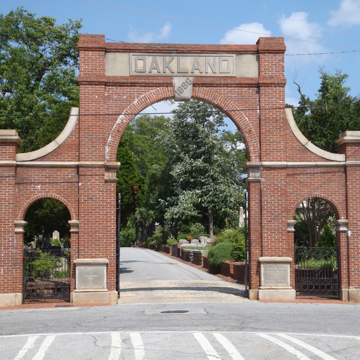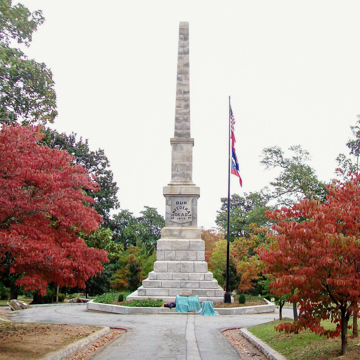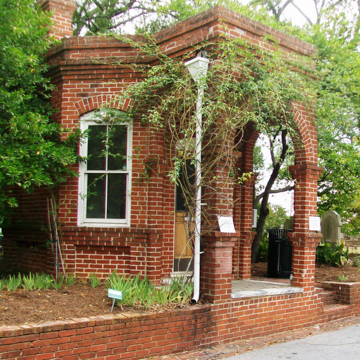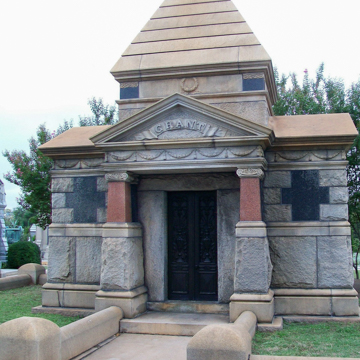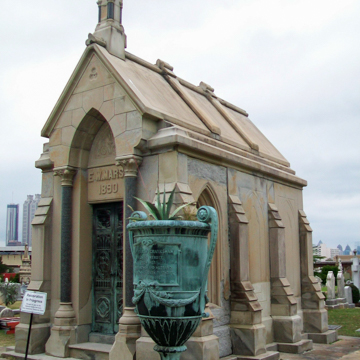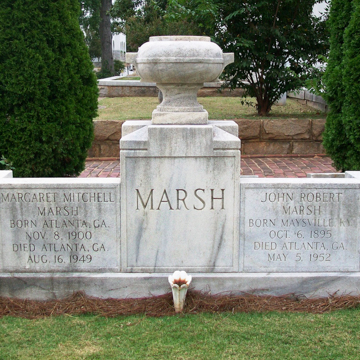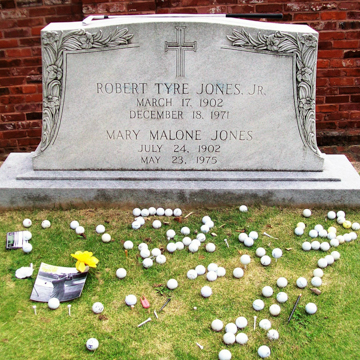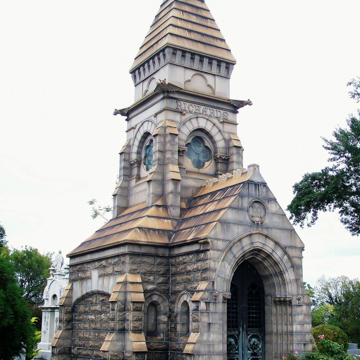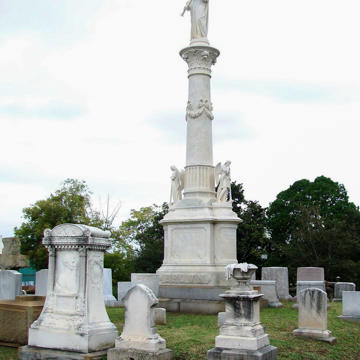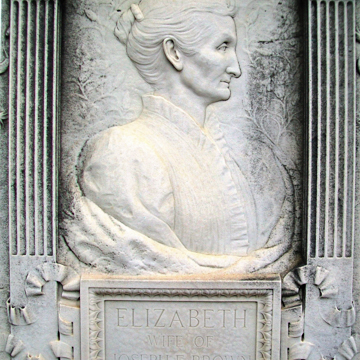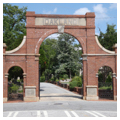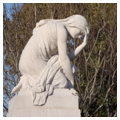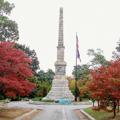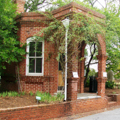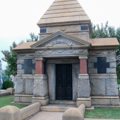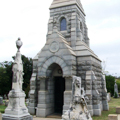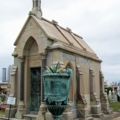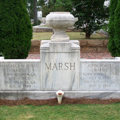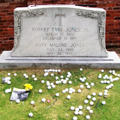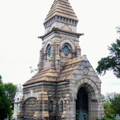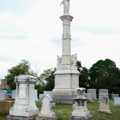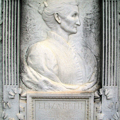Oakland Cemetery is a microcosm of Atlanta's Victorian era expressed in architecture, landscape, and the socio-economic spectrum. Barely thirteen years after the city's founding, Atlanta leaders established a municipal burial grounds that served the city exclusively from 1850 to 1884, when Westview Cemetery opened. Few church or private family burial sites existed, and as a result virtually everyone who died in Atlanta between 1850 and 1884 is buried here, from the wealthiest citizens to the poorest paupers (white and black), laid to rest in unmarked graves at city expense.
Atlanta’s most prominent citizens appear to have vied with one another to erect ambitious mausoleums and monuments in this necropolis, which includes some of the best Victorian art in the South. Part of the "rural cemetery movement" begun at Mount Auburn Cemetery in Cambridge, Massachusetts, Oakland is a landscaped park with monuments arranged on curving roads to create streetscapes of mausoleums, offering open perspectives and picturesque vistas: a place of serene beauty for the dead as well as the living, who walk its paths and picnic on its lawns. Among its famous residents are author Margaret Mitchell, golfer Bobby Jones, and Senator Ben Hill. Others buried here include Piamus W. Jones, founder of Atlanta's first baseball team in 1869; Bishop Wesley J. Gaines of the African Methodist Episcopal Church and President of Morris Brown College; and Atlanta's first baby, Julia Carlisle Withers, who was born in 1842 and died in 1919.
From an architectural point of view, among the most interesting (and often the heaviest) burial monuments are those memorializing the Grant, Maddox, Peck, and Kiser families. The elaborate Victorian Gothic Austell Family mausoleum (1882) reminds us of the prominence of such figures as Alfred Austell, who had helped incorporate the Atlanta National Bank in 1865. The 1890 E. W. Marsh Mausoleum, completed in the same style, competes with it nearby. The Kontz Family pylon (1909) is the cemetery's only Egyptian Revival Monument (a style that informed the entry gates of Mount Auburn). Jasper Newton Smith's full-length statue over the door to his 1918 mausoleum (which faces Oakland's entrance) appears to give him a perpetual oversight of the comings and goings at Oakland. The 1880 Richards Family mausoleum is a miniature Gothic chapel. Elizabeth Grisham Brown’s monument features a relief profile portrait set in an elegant classical frame. A recumbent “Lion of the Confederacy” sits on a heavily rusticated base; carved in 1894 by T. M. Brady of Canton, Georgia, this monument marks the graves of 3,000 unknown Confederate soldiers, most of whom were killed in the Atlanta campaign.
The Jewish section of Oakland contains the graves of the Rich Brothers, who founded Rich’s Department Store in Atlanta, and of Joseph Jacobs, who first sold Coca-Cola in his pharmacy in downtown Atlanta. Although Oakland Cemetery was generally inclusive, in 1852, soon after the cemetery opened, Atlanta City Council forbade blacks from being buried in the public grounds, and a separate section on the eastern edge of the cemetery became the African American section. By the Civil War, some 869 African Americans had been buried here, more than half were children, and all were likely slaves. Southview Cemetery was opened in 1886 for the black population of Atlanta, two years after Westview substantially increased burial sites for whites. The only mausoleum in the African American section of Oakland is that of the prominent black citizen Antoine Graves, realtor and once principal of the Gate City Colored Public School, later known as Houston Street School. Two white families obtained City Council permission to each bury their black “nanny,” in their family plot so there are two blacks in the white section: Catherine Holmes (d. 1896) is buried in the Boylston family plot, and Georgia Harris (born a slave, d. 1920) is in Captain Isaac Boyd’s family plot under a tombstone that reads “In loving memory of our colored mammy.”
While lacking the romance of Spanish moss-festooned oaks at the famed Bonaventure Cemetery in Savannah, Atlanta’s Oakland Cemetery nevertheless matches it in architectural merit, and is of interest to a wide range of citizens and devotees of Atlanta and Georgia history.
References
Kaemmerlen, Cathy J. The Historic Oakland Cemetery of Atlanta: Speaking Stones. Charleston, S.C.: History Press, 2007.






